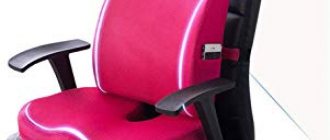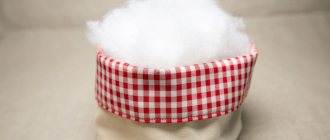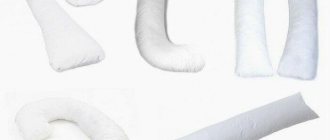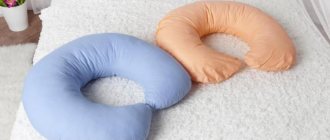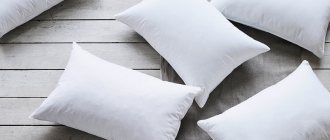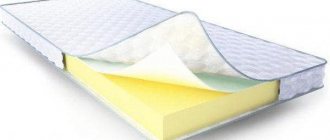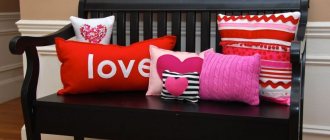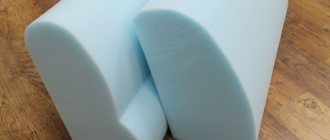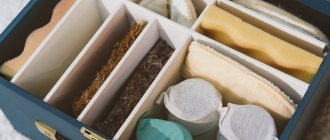Just a few decades ago, the question of which pillow filling is the best did not even arise. From time immemorial, bedding has been stuffed with a mixture of down and feathers. And it seemed like it would always be like this. But times have changed: and along with a wide choice came confusion - which of the dozens of fillings to choose so that the pillow was soft and comfortable, but at the same time served for a long time. To help you understand the issue, we wrote a detailed review and ranked the best fillers!
What should a good filler be like?
To begin with, it is important to determine the criteria that a high-quality filler must meet.
So:
- Do not cause allergies.
This is especially true for children, pregnant women and people prone to allergic reactions. WHO experts believe that by 2025, 50% of the population will suffer from the plague of the 21st century, so it is so important now to treat your body with the utmost care. - Prevent the growth of bacteria.
During sleep, a person sweats, and it is very important that the humid environment does not become a breeding ground for pathogens. - Resist moisture.
In addition to the previous point, it is important to note that a good filler dries almost instantly. And even in conditions of high humidity, the pillow should not remain damp. - Excellent air permeability.
A high-quality pillow “breathes”, so even in the hot summer it is not hot to sleep on. - Holds shape well.
There's nothing worse than a pillow that turns into a flat, hard lump of lumpy filling a month after you buy it. Sleeping on such equipment is inconvenient and uncomfortable. - Be easy.
The ideal pillow is soft, springy, almost weightless. - Easy to care for.
If bedding cannot be washed, what kind of convenience can we talk about?! Conversely, if the pillow can withstand gentle washing, it's worth paying a little more. - Serve for a long time.
Once upon a time, pillows were passed down from generation to generation. Today no one expects such durability from bedding. But changing pillows every six months is the height of wastefulness!
Pay attention to the product labeling. A good sign is the presence of CE, GOTS, AIAB, AJA Registrars or LGA certificates. Any of these markings means: the product is produced on an environmentally friendly production line, and the pillow itself does not contain GMO products, artificial preservatives or dyes.
The best natural fillers
Knowing the criteria for evaluating fillers, it is easy to determine which of the natural varieties of materials are the best.
| Natural silk | Eucalyptus fiber | Natural latex | |
| Hypoallergenic | +++++ | +++++ | ++++ |
| Antibacterial effect | +++++ | +++++ | ++++ |
| Moisture-repellent properties | +++++ | ++ | +++++ |
| Breathability | +++++ | ++++ | +++ |
| Ability to maintain shape | +++++ | ++++ | +++++ |
| Practicality | +++ | +++++ | ++++ |
| Ease | +++++ | +++++ | +++ |
| Durability | +++++ | ++++ | +++++ |
Pillows stuffed with natural filling are more common. They are generally highly breathable, prevent excessive sweating and are considered environmentally friendly. Their common disadvantage is that they are difficult to care for.
Natural fillers are a broad group of materials, which in turn can be divided into two categories: fillers of animal and plant origin.
Animal fillers
Feather and down of waterfowl,
most often - geese, less often - swans. The quality of pillows is determined by the percentage of materials. Ideally, the feather content should be no more than 30%, otherwise the pillow will very quickly begin to prick and the feathers will come out.
Pros: feather pillows are soft, pliable, and very pleasant to sleep on, especially in winter. They allow air to pass through well and last a long time: 5–7 years.
Cons: dust mites love down, so such pillows are strictly contraindicated for allergy sufferers and asthmatics. The filler absorbs moisture well, but dries out very slowly. Therefore, to avoid mold, feather pillows should be dried regularly in the sun and the filling should be sorted out on your own every year or two or sent to specialized workshops.
A good down and feather pillow is one where coarse feathers cannot be felt under the cover. And after pressing, no more than 3 minutes pass until the shape is completely restored.
Camel or sheep wool.
It is believed that wool can relieve muscle pain and cure rheumatism. Therefore, pillows with wool filling are recommended for office workers and people suffering from headaches and discomfort in the cervical spine.
Pros: Wool pillows are resilient, warm, light and soft. They last a long time: 3–5 years.
Cons: the filling does not hold its shape well and the pillow quickly loses volume. Wool absorbs moisture well, but it is strictly forbidden to wash products with natural filling. Therefore, very quickly a wool pillow turns into a breeding ground for bacteria.
Horsehair.
Use only in combination with wool. The task of the latter is to give the bedding softness; horsehair, in turn, is responsible for maintaining volume.
Pros: elasticity, which determined the main purpose of pillows with horsehair - to provide healthy sleep for people with posture problems.
Cons: not a self-sufficient material.
Natural silk.
If the web of silkworm caterpillars cost half as much, the question of which pillow filling is best would disappear by itself. But not every family can afford silk bedding yet.
Pros: Silk-stuffed pillows keep your skin cool in the summer and warm in the winter. They are elastic, soft, light as feathers and resistant to the formation of fungus and mold. The service life of silk pillows is 10–15 years. Occasionally, bedding should be dried, and for cleaning, take it to the dry cleaner or machine wash it on a delicate cycle.
Cons: high price.
Fillers of vegetable origin
Most types of pillows with natural filling of animal origin are contraindicated for allergy sufferers. But nature has created enough plant materials that can completely replace the usual down and feathers.
Cotton.
Soft, pleasant to the touch. It is especially comfortable to sleep on cotton pillows in the cold season.
Pros: environmentally friendly material, softness.
Cons: fragility, the service life of cotton pillows is only 12-18 months. After this period, the bedding can only be thrown away - even in dry cleaning, it is no longer possible to return the original volume to the product.
Bamboo.
This is a type of viscose, the raw material for which is young bamboo shoots. The structure of the material resembles padding polyester or cotton wool.
Pros: The main advantage of bamboo is its destructive effect on pathogenic microorganisms. Mold and dust mites simply don't stand a chance in this case. Therefore, doctors most often recommend bamboo pillows for allergy sufferers. Other advantages of the filler: elasticity, hygroscopicity, high breathability and the ability to wash the product in a washing machine.
Cons: In humid climates, bamboo pillows quickly become saturated with moisture and become very heavy. Another drawback of the products is increased creasing. Just a couple of months after purchase, you will notice that the pillow is no longer as comfortable and voluminous. The situation can be partially solved by regular beating.
Very often, sellers and manufacturers refer to synthetic fibers as bamboo. Therefore, in order not to buy a fake, look for the marking on the packaging: 100% bamboo cellulose or 100% bamboo fiber.
Lyocell or eucalyptus fiber.
Another option recommended for people prone to allergic reactions. If the healing properties of bamboo have not yet been confirmed by any study, then there is no doubt about the abilities of lyocell: eucalyptus essential oil has a positive effect on the respiratory system and kills fungi and bacteria.
Pros: pillows filled with lyocell are light, warm, and resilient. They do not create a greenhouse effect and absorb moisture well. These pillows can be washed on a gentle cycle in the washing machine.
Cons: high price. Therefore, many manufacturers mix lyocell with synthetic fillers, trying to make pillows accessible to a wide range of consumers.
Latex.
Blocks of foamed Hevea juice are the best option for an orthopedic pillow. The material is resistant to mold, does not harbor dust mites, and if necessary, the pillow can be washed by hand in warm water.
Pros: holds its shape perfectly, does not absorb odors, does not lose its properties for 5–7 years, and most importantly, provides excellent support for the spine.
Cons: they are expensive, do not absorb moisture, which is why latex pillows are not recommended for people suffering from excessive sweating.
Buckwheat husk.
Hard, noisy, with a specific smell - this pillow belongs to the category of therapeutic ones and can be recommended for people with cervical osteochondrosis.
Pros: environmentally friendly material and hypoallergenic. Insects never grow in the husks and dust does not accumulate. Sleeping on such a pillow is especially pleasant in the summer: the filler allows moisture to pass through itself and does not retain the heat of the human body.
Cons: bedding stuffed with husks cannot be washed, and the pillow only lasts 1.5–2 years.
Seaweed
. A very soft filler that does not hold its shape at all. That is why pillows are tightly stuffed with seaweed to achieve an orthopedic effect.
Pros: Seaweed is loaded with mineral salts and iodine. Upon contact with the body, the pillow begins to evaporate them, increasing a person’s immunity and calming him down after a hard day at work.
Cons: Not machine washable and limited to 3 years.
Do not use cleaning products containing chlorine to wash seaweed pillows. Spinning is also contraindicated: it can damage the structure of fragile fibers. Just hang the product by the corner so that the water drains out on its own.
Healing herbs.
Pillows stuffed with lavender, hops, thyme, and mint are not intended for permanent use. They are more of an element of aromatherapy, which allows you to cope with stress and overcome insomnia.
Pros: depending on the composition of the collection, the pillow can invigorate or calm, give strength or speed up the process of falling asleep.
Cons: the filler rustles, and after a few months it crumbles into dust, losing its therapeutic properties.
Pillows of all shapes and sizes
The best prices for wholesale purchases in our store
View in the catalog
What is the best pillow filling?
All fillers can be divided into two large groups: natural and artificial. These names speak for themselves.
Natural fillers
Natural fillers are created from natural ingredients. They are environmentally friendly and durable. But they are not without drawbacks: in some cases they can cause allergies, so if you are hypersensitive to the filler, the pillow will have to be changed.
Down and feather
Pillows with such filling are quite light, quickly remove moisture and retain heat well. However, over time, the feathers clump together, break, and come out through the seams of the pillow. In addition, products with such a filler require periodic drying in the sun and special dry cleaning, since regular washing is not allowed for them.
Wool
As a rule, sheep or camel wool is used. The advantages of such a filler include an optimal combination of softness and elasticity and the ability to store heat. Many people believe that wool has healing properties. Disadvantages: rapid loss of shape and short service life due to the difficulty of maintenance. Wool pillows cannot be washed, so over time they can become a breeding ground for pathogens.
Bamboo
Surprisingly light material, made from young bamboo shoots, looks like cotton wool or padding polyester. This filler is quite elastic, hygroscopic, allows air to pass through well, has bactericidal properties and is easy to clean. Pillows filled with bamboo can be washed normally. Something worth mentioning. Pillows made with bamboo fiber are not recommended for use in humid climates due to their ability to quickly absorb moisture and lose their lightness and elasticity. In addition, regular beating is required to maintain their volume.
Buckwheat husk
The husk or husk of buckwheat grains is an environmentally friendly natural filler with orthopedic properties. Pillows with such filling keep their shape perfectly, provide support for the head and neck in an anatomically correct position, do not cause allergies and do not create a favorable environment for the proliferation of microorganisms. The only drawback for many is the rustling noise during use, as well as the considerable weight of the product.
Latex
These models are based on blocks made from the foamed sap of the rubber tree, also known as Hevea. The biggest disadvantage of this filler is the price. She's quite tall. However, the advantages of this filler outweigh this disadvantage. Latex has remarkable elasticity, is moderately soft, provides comfortable support, does not cause allergies, prevents the growth of bacteria and can last 5 years or even more. The only thing is that latex is not able to absorb moisture, so such pillows are not suitable for people with excessive sweating.
Lyocell (eucalyptus fiber)
One of the most environmentally friendly and hypoallergenic materials. It has bactericidal properties and has a beneficial effect on the respiratory system. Pillows with lyocell are light, elastic and hygroscopic, and caring for them is quite simple: they can even be washed in a washing machine on the most gentle cycle. The disadvantages include the high price.
Natural silk
This filler can be classified as elite. It is able to create a comfortable microclimate in any conditions, is not affected by fungi and mold, and the service life of pillows with silk is 10-15 years.
Artificial fillers
Artificial fillers for filling pillows are created on the basis of synthetic fibers. Modern technologies make it possible to adapt artificial fillers to any wishes and needs, while they are durable and almost completely hypoallergenic.
Silicone
One of the most popular materials for filling pillows today is silicone. It is light, soft and quite elastic, does not attract dust and does not cause allergic reactions. Easy to care for - regular wash on delicate cycle. True, the service life of such pillows is short - a maximum of 3 years.
Polyester fiber
Polyester filling retains heat well, but at the same time allows air to pass through, effectively removes moisture and is easy to wash. The big disadvantage is that these pillows are extremely soft and do not provide adequate support for the head and neck.
Microfiber
Another name for this filler is artificial down. It has an elastic texture and lightness, does not absorb odors and excess moisture and is quickly restored if you follow the rules of care. Among the disadvantages, this material is capable of accumulating static electricity.
Viscoelastic
Otherwise, materials with memory effect. Foam pillows are often included in the orthopedic category. This material supports the head and neck, holds its shape perfectly and does not cause allergies. Disadvantages include the high price and fear of water.
Microgel has a number of advantages: it is lightweight, elastic, quickly restores its original shape, provides orthopedic support, and has a long service life. However, it is worth noting that the cost of such models is impressive.
Holofiber
The most popular filler, it is light and soft, and also one of the most inexpensive materials. It has sufficient elasticity, is hypoallergenic, but quickly loses its shape; it is recommended to change such pillows every 2 years, sometimes more often.
The best artificial fillers
Trying to compete with nature, humanity never tires of inventing more and more new materials. And today the top three among high-tech pillow fillings are as follows:
| Microfiber | Microgel | Memory foam | |
| Hypoallergenic | +++++ | +++++ | +++++ |
| Antibacterial effect | +++ | +++ | ++++ |
| Waterproof | ++++ | +++++ | + |
| Breathability | ++++ | ++++ | ++ |
| Ability to maintain shape | +++++ | +++++ | +++++ |
| Practicality | +++++ | +++++ | ++ |
| Ease | +++++ | +++++ | +++ |
| Durability | +++++ | +++++ | +++++ |
The main advantages of synthetic materials are low price and ease of maintenance. Most pillows filled with artificial fibers can be machine washed at 30°C.
Sintepon.
Pioneer in the market of synthetic fillers. While new, it is soft and pleasant to the touch. But after a couple of months the pillow settles and becomes harder. You can extend the life of the product if you wash it by hand. But in any case, the padding polyester bed will have to be changed after 9–12 months.
Pros: cheap, hypoallergenic, easy to care for - pillows stuffed with padding polyester can be machine washed.
Cons: quickly loses shape and does not provide sufficient support to the head during sleep.
Polyester fiber.
This synthetic filler replaced padding polyester several decades ago. The patented HollowFiber technology has become a household name, and today holofiber is the name given to a whole range of materials that are produced using similar technology and differ slightly from each other. Depending on the twist of siliconized fibers, they are distinguished:
- Comforel.
Small soft balls. They are not very elastic and do not retain their shape well. But such pillows are cheap and dry instantly after washing. - Synthetic fluff.
Its hollow fibers are not twisted, but are a single mass reminiscent of swan or goose down. - Philfiber.
Siliconized filler fibers are twisted into tight spirals. Pillows with fillfiber are stiffer than those stuffed with comforter, but retain their shape longer and provide better support to the sleeping person. - Holophile.
Hollow four-channel fiber. Among other holofibers, the filler is characterized by increased softness. At the same time, the pillows easily return to their original shape after being crushed.
Pros: all holofibers are elastic, soft, lightweight, hypoallergenic. They can be washed in a washing machine, and the service life of such bedding reaches 5 years.
Cons: they clump together and quickly lose volume. Sleeping on holofiber pillows is always uncomfortable: your head sweats a lot. But for sofa, guest, and camping pillows, this filler is ideal.
Holofiber has high soundproofing properties - you can sleep on such a pillow, even if the TV is on nearby or the neighbors are making noise behind the wall.
Expanded polystyrene.
These are the same elastic balls that fill soft toys and sofa cushions. Products with such filling are classified as anti-stress, because sorting the balls is so pleasant that you can do it for hours.
Pros: does not absorb odors and does not cause allergies.
Cons: you can’t wash a pillow with polystyrene foam, and you can’t sleep on it all the time.
Artificial swan down.
Siliconized polyester fiber, which was invented in the USA back in the 70s of the twentieth century and patented under the name “Thinsulate”. The filler fibers are 60 times thinner than human hair. And this determined the properties of the material.
Pros: pillows stuffed with Thinsulate are designed for the cold season. They are very warm, soft and light. At the same time, Thinsulate is characterized by increased elasticity, does not crumple, easily returns to its original shape and lasts a long time: 4–5 years. Thinsulate pillows can be washed in a washing machine.
Cons: the material is expensive, accumulates static electricity. In summer it is too hot to sleep on such pillows.
All siliconized fiber fillers are absolutely safe for health. These materials are thermally bonded together and do not contain harmful substances. At the same time, layers of padding polyester are connected to each other with adhesives, the vapors of which continue to be released into the atmosphere.
Microgel.
Another analogue of natural down, which is softer and lighter than most polyester fiber fillers. For comparison: the thickness of single Comforel fibers is 6 denier, microgel - 0.9 denier.
Pros: lightness, elasticity, breathability, moisture resistance. Thanks to the ability to quickly restore their original shape, pillows with microgel last a long time: 5–7 years.
Cons: the price is higher than other synthetic fillers.
Microfiber.
One of the most modern materials, for the manufacture of which polyester and polyamide are used. The thickness of the finished microfiber is 10 times less than silk thread and 100 times less than human hair. Microfiber has absorbed all the advantages of synthetic fillers, and is only slightly inferior to natural fillers in breathability. Such pillows do not accumulate static electricity, quickly absorb moisture and dry just as quickly.
Pros: hypoallergenic, strong ability to retain heat, easy to care for - microfiber pillows can be washed in a machine at a temperature of 60 0C.
Cons: less breathable than natural down or silk.
Memory foam: memory, viscoelastic.
Used for the manufacture of orthopedic pillows. Such products are valued for their ability to support the head in a physiologically correct position during sleep. But if you suffer from excessive sweating, foam is not for you, it will only make the problem worse.
Pros: hypoallergenic, hygienic, pronounced orthopedic properties. With proper care, memory pillows will last at least 5 years.
Cons: high price, poor breathability, high maintenance requirements. Washing memory pillows is strictly prohibited. Moreover, if you simply spill a glass of water on the product, after drying it will turn into stone.
The best fillings for “pregnant” pillows
Expectant mothers need special comfort while sleeping or resting. Special pillows were invented for them to support their growing belly at night. It is better to choose synthetic material as a filler - it does not cause allergies, which is very important for both mother and baby.
Grass Textile Comforel – holofiber balls
4.8
★★★★★
editorial assessment
90%
buyers recommend this product
These soft balls are made of siliconized fiber and have a diameter of 1.5 to 2.5 cm. The filler is produced by a company from St. Petersburg. The material does not accumulate static electricity and does not cause allergies. It is light, soft and breathable.
Advantages:
- keeps its shape perfectly;
- Can be washed multiple times;
- can be pressed in gentle mode;
- durable;
- hypoallergenic.
Flaws:
- requires thorough rinsing, as it produces a lot of foam;
- After washing, the product must be straightened, otherwise it will take a long time to dry.
This filler is suitable for sewing pillows intended not only for pregnant women, but also for nursing mothers.
Average cost of fillers
Alas, often the determining factor when choosing a pillow is its cost. And this is not surprising, because the difference in price between products can reach 5–10 times. Therefore, we have compiled a comparative table of approximate prices for 50x70 cm pillows with different fillings.
| Minimum price for sleeping pillows | |||
| Natural fillers | Synthetic fillers | ||
| Down and feather | 700 rub. | Sintepon | 200 rub. |
| Camel or sheep wool | 1300 rub. | Holofiber | 400 rub. |
| Natural silk | 12000 rub. | Thinsulate | 1000 rub. |
| Cotton | 1000 rub. | Microgel | 2000 rub. |
| Bamboo | 1800 rub. | Microfiber | 1700 rub. |
| Lyocell | 3500 rub. | Memory foam | 7000 rub. |
| Latex | 3600 rub. | Minimum prices for decorative pillows | |
| Buckwheat husk | 500 rub. | Healing herbs | 600 rub. |
| Seaweed | 600 rub. | Expanded polystyrene | 1300 rub. |
Please note: the table shows the minimum prices for pillows. If the cost of the product is lower, most likely the manufacturer used a mixed filler, supplementing the expensive natural material with synthetic fibers.
Best pillow filling for sleeping
If we do not take into account orthopedic pillows (they have completely different requirements), then the leaders among all fillers are silk, lyocell, microfiber and microgel. The combination of their characteristics is optimal for sleep. Well, it’s up to you to decide which bedding is optimal for your family, focusing on your budget and personal preferences.
| Silk | Lyocell | Microfiber | Microgel | |
| Advantages | antibacterial and thermoregulating properties, softness, elasticity, hygroscopicity, durability | positive effect on the respiratory system, antibacterial properties, lightness, elasticity, hygroscopicity | hypoallergenic, ability to retain heat for a long time, hygroscopicity, quick drying after washing, do not accumulate static electricity | very soft, lightweight, elastic, moisture-resistant, breathable |
| Flaws | high price | high price | lack of breathability, may cause sweating | the highest price among synthetic fillers |
| Features of care | can be washed on a delicate cycle, after washing you need to beat it well to restore its shape | Can be washed in a washing machine on a delicate cycle | Can be machine washed at 60 0C. | machine washable at 30 0C |
| Lifetime | 10–15 years | 5–7 years | 4–5 years | 5–7 years |
| Price | 12000 rub. | 3500 rub. | 1700 rub. | 2000 rub. |
So far, the only thing in which natural materials cannot surpass synthetic fillers is breathability. Therefore, if you sweat excessively, it is still worth purchasing a pillow stuffed with eucalyptus fiber, bamboo, silk or feather.
Pillows with any filling
Best prices for bulk purchases
Pillows with natural and synthetic filling in the catalog
View in the catalog
The best synthetic fillings for pillows
Synthetics have their advantages. Pillows with such filling will not harbor ticks, they will not get wet, and if properly cared for, they will not mat.
Fortex Memory Form Aloe – foam rubber with memory effect
4.8
★★★★★
editorial assessment
90%
buyers recommend this product
Highly elastic foam rubber is said to have been developed in NASA laboratories and produced domestically. Most often it is used to fill mattresses, but it is also quite suitable for pillows. The foam easily takes the shape of the human body and “remembers” it. This pillow will help relieve pain and does not interfere with normal blood flow. The head always occupies the correct anatomical position during sleep.
Advantages:
- optimal ratio of elasticity and elasticity;
- environmental Safety;
- relieves tension in soft tissues.
Flaws:
- high price.
This filler is suitable for those who experience tension in the neck due to pain and often toss and turn in their sleep.
AlVitek Swan down made of synthetic fiber - an artificial down substitute
4.6
★★★★★
editorial assessment
84%
buyers recommend this product
You won’t find real swan down on sale, but it is successfully replaced by a filler made of ultra-thin, highly siliconized microfiber from Moscow. It washes well, does not accumulate foreign odors, and is affordable. Unlike natural down, synthetic filler is not afraid of fungus, mites and bacteria: they simply do not grow there.
Advantages:
- hypoallergenic;
- does not fall off;
- dries quickly after washing.
Flaws:
- does not absorb moisture;
- electrified;
- short service life - no longer than 5 years.
Synthetic down is suitable for people with moderate incomes as a good substitute for natural materials.
READ ALSO
12 best bedding sets
Tips for choosing pillow filling
There is not and cannot be a single right decision in choosing bedding. What is good for a child will not suit his parents at all, and an allergic person will not be able to sleep on a pillow that a completely healthy person has chosen for himself. Therefore, never buy bedding for the whole family at once. First, think about what qualities of the filler are important for each of your household members.
The best filler for children
Pillows that are too voluminous are not suitable for children, because the spine is still developing, and it is important to provide it with good support while sleeping. Therefore, before a year, the best option is a flat, low pillow made of seaweed, after a year - a latex orthopedic product.
The best filler for pregnant women
9 months of expecting a baby is the time to pamper yourself in every possible way. And this also applies to the choice of bedding. Choose the softest, most elastic fillers: eucalyptus fiber, bamboo, microgel.
Car pillow filler
Holofiber products have proven themselves well as travel options. They are soft, elastic, easily withstand frequent washing and dry quickly.
Filler for orthopedic pillow
The best prevention of osteochondrosis is bedding made of natural latex. It is worth choosing such a pillow individually: do not hesitate to lie on it in the store, otherwise the purchase will be useless.
Filling for decorative pillows
A thought filled with polystyrene foam balls can calm the nervous system after a working day. But if the goal is to create a lounge space for relaxation with a dozen sofa cushions, use padding polyester. This is the most affordable option that holds its shape perfectly.
Back pillow filler
The main requirement for this product is rigidity. Viscoelastic foam and latex have this quality. But the best massage effect is provided by buckwheat husks.
Foot pillow filler
If your legs are swollen or varicose veins have made themselves felt, it’s time to take care of a leg cushion. The best material for it is memory foam. It does not heat up even in hot weather, does not press too hard and remembers the position in which you were most comfortable.
People prone to allergic reactions should approach the choice of pillow filling with the utmost seriousness. Natural materials include silk, bamboo and lyocell. The best synthetic fillers: microfiber and microgel.
Rating of pillow fillings
Fillers can be of two types: synthetic and natural. They have individual characteristics, advantages or disadvantages. The rating was compiled based on the results of comparative tests, consumer reviews, and expert opinions. To give a clearer picture of the best pillow fillings, the following characteristics were also taken into account:
- Quality;
- Environmental friendliness;
- Safety;
- Convenience;
- Weight;
- Safety for humans;
- Thermal insulation properties;
- Long-term use.
After receiving all the data, feedback was generated on which pillow filling is best to choose to ensure a comfortable sleep. All presented models from the rating differ from each other in practicality, safety and comfort.
The best fillings for a blanket
The best manufacturers
Among Russian manufacturers of down and feather products, three leading companies clearly stood out:
- Grass Family.
The products are stuffed with a mixture of goose down and feathers, and the filling is packed in a thick cover made of natural cotton. The company's production resources are partially located in Austria, so all products undergo strict quality control. - "Light dreams."
The company additionally ozonizes down and feather raw materials, thereby preventing the appearance of dust mites and fungus. - "Premium Leader"
Sells high-quality down and feather pillows at affordable prices, uses satin covers.
Domestic companies received the best reviews about bedding with synthetic fillers:
- “Dargez”
for the best price-quality ratio in products with holofiber. - Revery
is a manufacturer of orthopedic memory foam pillows. - "Ascona"
for the widest range of products with synthetic hypoallergenic fillers.
